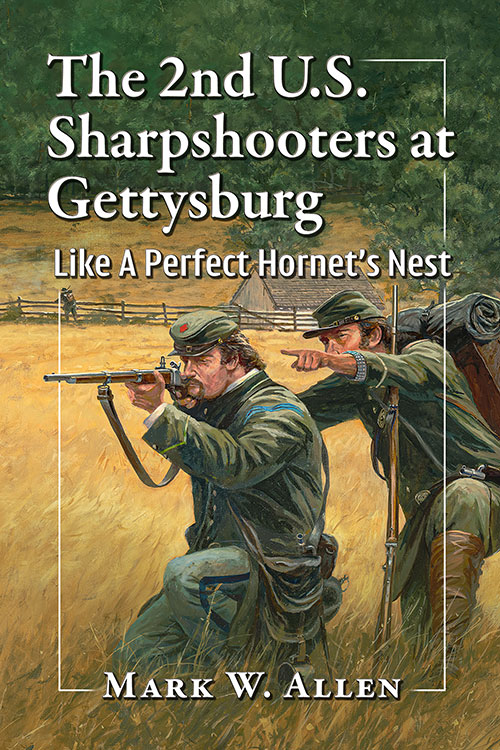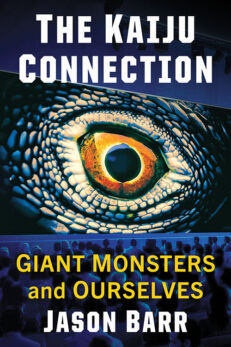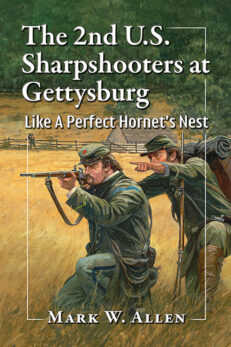The 2nd U.S. Sharpshooters at Gettysburg
Like A Perfect Hornet’s Nest
$29.95
In stock
About the Book
The many works on the Battle of Gettysburg have neglected the role of the 2nd U.S. Sharpshooters, known for their extensive training and specialized tactics. This history is the first to explore the actions on July 2, 1863, of this Union Army regiment largely composed of men from Maine, Michigan, Minnesota, New Hampshire, Pennsylvania, and Vermont.
Drawing on newly discovered primary sources, this book seeks to clarify mysteries such as the identity of the non-commissioned officer who met with Company B of the 20th Maine and the location of Major Homer R. Stoughton during the battle. Following the understrength regiment as it confronts two Confederate brigades, this thorough historical narrative presents a long untold story of the Battle of Gettysburg.
About the Author(s)
Bibliographic Details
Mark W. Allen
Format: softcover (6 x 9)
Pages: 220
Bibliographic Info: 56 photos, 41 maps, 4 appendices, notes, bibliography, index
Copyright Date: 2024
pISBN: 978-1-4766-9595-2
eISBN: 978-1-4766-5390-7
Imprint: McFarland
Table of Contents
Acknowledgments vii
Preface 1
Introduction: 2nd Regiment, U.S. Sharpshooters 5
One—Setting the Stage: Initial Moves for an Upcoming Fight 19
Two—Pitzer Woods: A Reconnaissance Changes Everything 48
Three—Outguessing the Opponent: Positioning of Troops in the Early Afternoon 79
Four—Stepping Off and Rifles Blazing: The Attack and Defense of Slyder Farm 101
Five—Fall Back or Be Killed: The 2nd Regiment Retreats 116
Six—Among the Boulders: Defending Little Round Top 144
Seven—The Days After: Pickett’s Charge, Picket Lines, and Conclusions 166
Appendix A: Abbreviated Order of Battle 179
Appendix B: Engaged Strengths on June 30, 1863, Muster Roll 184
Appendix C: Supplemental Figures 185
Appendix D: 2nd Sharpshooters Company Captains 189
Bibliography 197
Index 207
Book Reviews & Awards
• “Impeccably researched and chock full of details, Allen’s deep dive into the Union’s 2nd Sharpshooters role in the Battle of Gettysburg uncovers the fragile hinge point in this defining battle that would sway the victory to the Union—the nick-of-time race to the top of Little Round Top.”—Ryan Fairfield, host of the Warrior Next Door podcast
• “Mark Allen tells an engaging and detailed story of how the use of sharpshooters, primarily the 2nd U.S. Sharpshooters, played a pivotal role in the Battle of Gettysburg. The book portrays the step-by-step movements and decisions on both sides of the conflict through narrative and maps informed and supported by an impressive array of first-hand accounts, ranging from the official reports and personal correspondence of the commanding officers to letters home from front-line soldiers. The book clearly delineates how the actions of the sharpshooters contributed greatly to the decisive conclusion of the battle that many historians regard as the turning point of the war.”—David E. Allen, Ph.D., Texas Christian University
• “Gettysburg is one of the most written-about subjects in American history, but Allen’s meticulous and engaging study proves that there remain important aspects of this pivotal battle to be explored. The actions of the 2nd US Sharpshooters during the pivotal second day of the battle had an impact far beyond their modest numbers, and this work contributes a small but vital piece to the understanding of this battle.”—Thomas J. Goetz, Ph.D., associate professor, American Military University.





